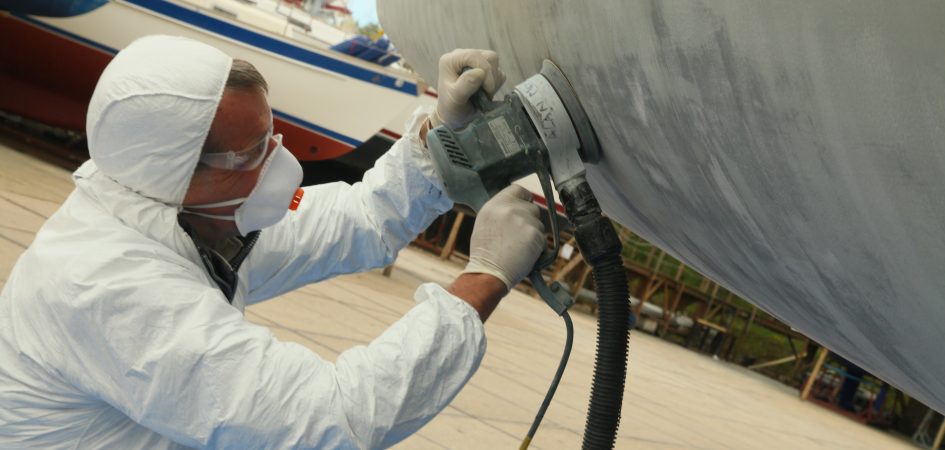
Published on: 10 March 2021

For many years the negative effects of anti-fouling boats have often been viewed as a necessary evil, however, there are ways that you can mitigate the environmental impacts of the anti-fouling process.
The Green Blue is dedicating the 15-19 March to promoting anti-fouling best practice with the campaign, ‘Protect, Collect, Dispose.’ The campaign was first launched in partnership with the British Coatings Federation, The Yacht Harbour Association and The Green Blue in 2017.
Anti-fouling paints are, by their nature, a hazardous chemical mixture that once applied to the hull of a boat can be detrimental not only to the marine organisms that come into contact with the boat, but also to the surrounding marine life when the paint becomes flaked and chipped. Across the campaign week, The Green Blue will be sharing handy tips on both their social media pages and website on how to make the anti-fouling process as seamless and as sustainable as possible.
Many anti-foul paints contain quantities of copper or zinc which, although helps preserve the hull from unwanted growth, can also poison and contaminate the surrounding marine life and their habitats. Non-biocidal coatings such as silicone, vinyl or ultrasonic technologies are now available and are much less damaging to marine life. Encouraging boaters to choose the most environmentally friendly paint which is suitable for their boat and boating environment is just one of many simple steps that The Green Blue is promoting to significantly reduce anti-fouling’s impact on the environment.
Protect, Collect, Dispose
The first step is to ‘Protect,’ lay down a tarpaulin or groundsheet before starting work on your boat. This inexpensive act can make a huge difference to the local wildlife. Not only does the tarpaulin protect the surface directly under the boat from paint drips or spills, but it also acts as an effective instrument to collect and dispose of loose debris and scrapings from the boat.
The second step of the process is ‘Collect.’ The tarpaulin should make it easier to collect large remnants, but using an industrial vacuum-cleaner linked to the paint scraper will minimise the amount of loose paint flakes and dust. Wet sanding will also help to prevent dry dust from escaping into the environment. Any water used when pressure washing the boat should also be collected, this can be achieved using portable bunding or a filtered washdown facility provided by some marinas, boatyards or harbours.
The final step is to efficiently ‘Dispose’ of anti-fouling waste. Always ensure that all hazardous waste such as paint pots, disposable gloves and paint scrapings are disposed of in hazardous waste bins. Don’t forget that Personal Protective Equipment, which should always be worn, may also need disposing of.
There are, of course, many benefits of applying anti-foul paint and some of them are environmental. These can include a decrease in drag and less propeller restraint resulting in fuel efficiency, as well as reducing the transfer of invasive species, but if more environmentally friendly alternatives are adopted this will result in a greater overall positive impact to safeguard our waters.
All boat owners can play a vital role in minimising the risk to marine life from being inadvertently affected by anti-foul.
To find out more or to get involved with ‘Protect, Collect, Dispose’ follow The Green Blue on social media. The Green Blue would also like to see your best practice photographs, so don’t forget to tag The Green Blue using: #ProtectCollectDispose

